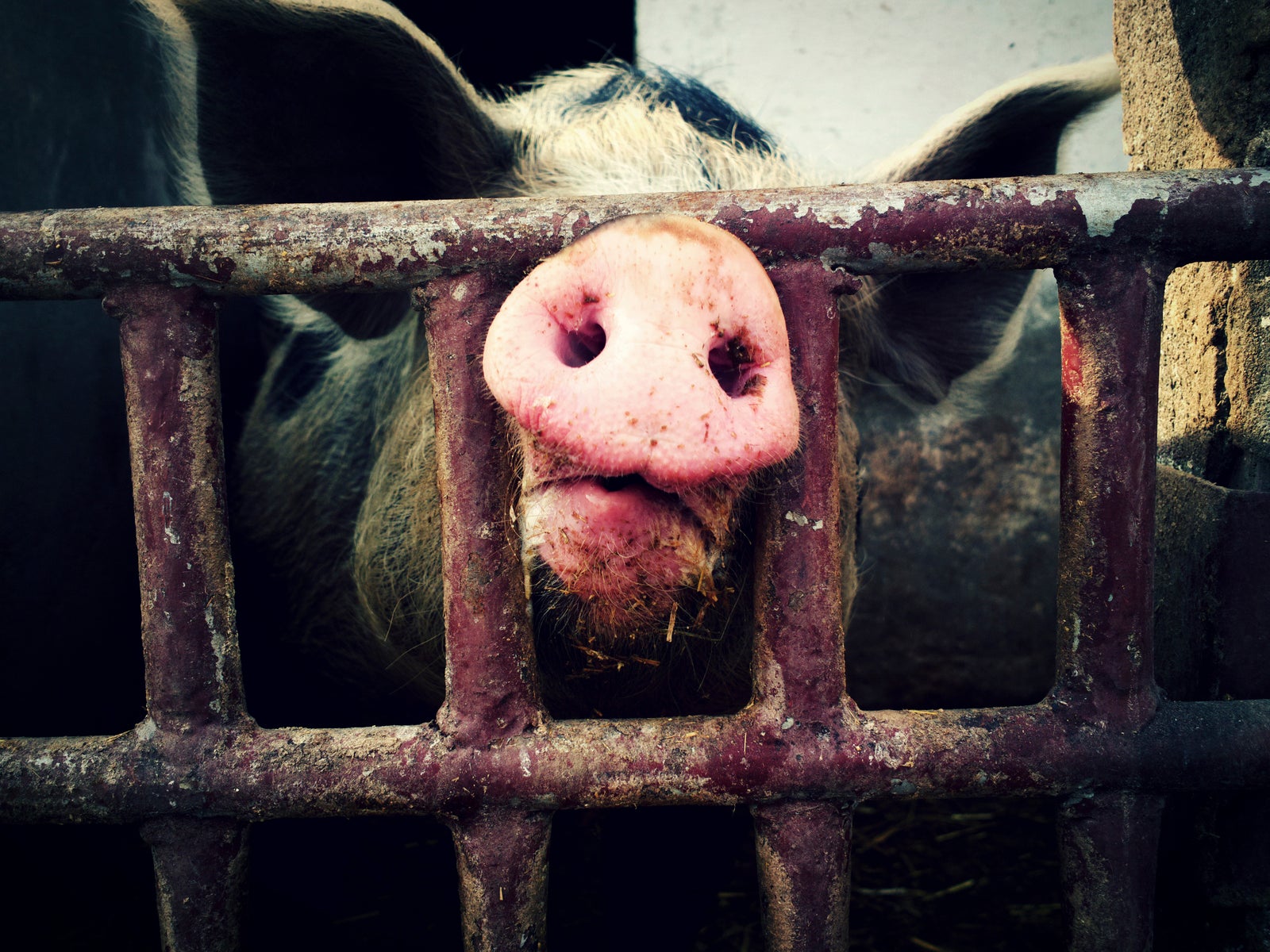The Price of Pork
A new report sheds light on the severity of North Carolina’s pig waste problems.

This page was published 9 years ago. Find the latest on Earthjustice’s work.
North Carolina is known for its tasty pork products—from bacon and honey-cured ham to smoked sausage and pulled pork topped with the state’s famously thin barbeque sauce. But the pork-producing powerhouse’s savory selections have a less-than-appetizing side: immense amounts of pig waste.
This week, the Environmental Working Group and the Waterkeeper Alliance released a report finding that North Carolina animal operations produce almost 10 billion gallons of fecal waste every year, with a majority of it coming from hog facilities. This is enough waste to fill more than 15,000 Olympic-size swimming pools—and putting pig poop in pools is not too far off from the reality of how industrial operations currently deal with waste.
These giant hog operations, and their poultry and cattle counterparts, are known as Concentrated Animal Feeding Operations or CAFOs. In order to address the enormous amounts of waste produced from these operations, hog operators often store it in open pits called “lagoons” that are lined with a thin layer of clay. In North Carolina, there are more than 4,000 of these cesspools, and they’re filled with untreated animal waste rife with disease-causing microbes such as E. coli and enterococci bacteria. Some hog facilities will even spray the waste onto nearby fields as “liquid manure.” These practices create a long list of adverse health effects, including respiratory disease, as well as the creation and spread of antibiotic-resistant bacteria.
This waste can also drift as mist onto neighboring properties, causing unbearable odors that surrounding communities must endure daily—a problem that becomes even worse during hot and humid summer months. CAFOs are largely located in rural areas, where they significantly and disproportionately decrease the quality of life in low-income, communities of color.
These lagoons can also contaminate nearby water supplies. According to the U.S. Department of Agriculture, lagoons are supposed to be located outside of floodplains to reduce the risk of water contamination in the event of a flood. However, the new report found that there are currently 170 waste lagoons located in the state’s 100 year floodplain. What’s more, there are 37 lagoons located within half a mile of a school, and 136 located within half a mile of a public water well.
But the problems don’t stop with pork. North Carolina’s pig problem is compounded by poultry operations. Currently, poultry housed in CAFOs outnumbers state residents by 20 to one, and the state has thousands of poultry feeding operations that together house more than 200 million birds.
It’s not just the presence of these CAFOs and their accompanying waste lagoons that endanger communities; it’s also the prevalence. The new report includes several interactive maps that illustrate the geographic density of these operations. For example, the analysis found that just two counties, Duplin and Sampson, produce about 40 percent of the state’s total wet animal manure and 18 percent of its dry waste.
In 2014, Earthjustice filed a complaint on behalf of the North Carolina Environmental Justice Network, Rural Empowerment Association for Community Help and Waterkeeper Alliance with the EPA alleging that North Carolina’s lax regulations of pig waste disposal discriminate on the basis of race and ethnicity. In 2015, the EPA accepted the complaint. It has since launched an investigation of the North Carolina Department of Environmental Quality.
The recent report from the Environmental Working Group and the Waterkeeper Alliance expands on the growing body of evidence that CAFOs are degrading the quality of life for hundreds of thousands of rural residents in North Carolina. While the state loosely regulates swine operations, requiring them to register and have annual inspections, this report makes it clear that North Carolina regulators are not doing enough to adequately protect rural communities.
“For years residents of eastern North Carolina have called on the state to address the impacts of this industry, but the state has repeatedly ignored their concerns,” says Earthjustice attorney Marianne Engelman Lado, who filed the complaint. “North Carolina’s failure to act represents another example of environmental injustice, and it was high time for the EPA to take action and enforce the civil rights of residents.”